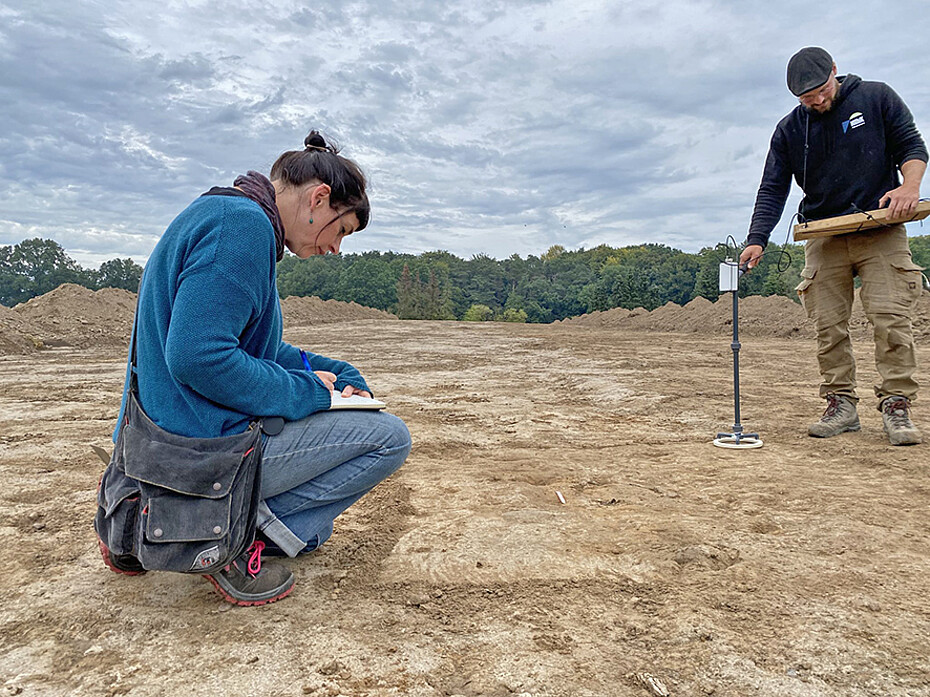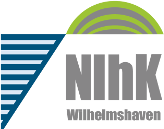
Interdisciplinary research in Nienbüttel has begun
This year, the first phase of the project »Rituals in a new light – modern field research, documentation and visualisation strategies using the example of the burial ground of Nienbüttel«, conducted by the NIhK in cooperation with the University of Rostock, started with a four-week field research campaign. In addition to extensive metal detector inspections, the focus was particularly on methodological and method-critical issues. On the one hand, the geomagnetic measurement of 2018 (with which the extent of the cemetery area could be determined and the old excavations from the beginning of the 20th century could be localised) will be re-evaluated. For this purpose, all but a few centimetres of topsoil was removed from an area of 1.2 hectares by a mechanical digger and a new geomagnetic survey was then carried out at the level of the archaeological features. The quasi ›disturbance-free‹ image will now be compared with the conventional measurement practice at topsoil level and will form the basis of targeted small-scale excavation trenches in the coming year.
In addition to the geomagnetic surveys, susceptibility measurements and sedimentological investigations were carried out over the entire excavation area. The research question is whether geomagnetic anomalies are of anthropogenic origin or due to soil-forming processes. The goal of the analyses is to create a ›signature catalog‹ in order to enable a more precise approach to potential anomalies in the magnetogram.
